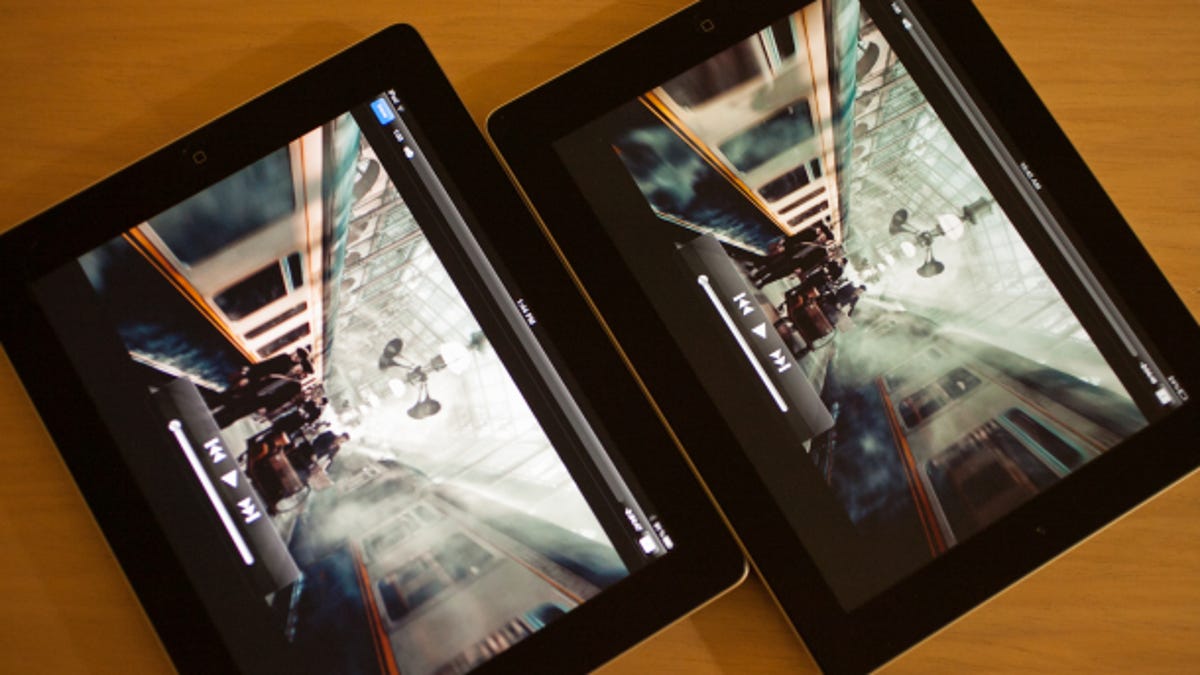Too soon to call warm iPads 'heatgate'
Apple's latest iPad reportedly runs on the warm side compared to previous models. Is this a bug or a feature? One thing's for sure--it's way too early to call it a full-blown controversy.

Everyone loves a controversy, and Apple has had its share of them in the past few years.
Stock options backdating? Check. A lost, leaked iPhone months ahead of its release? Yep. Antennagate, locationgate, batterygate, addressbookgate--those too.
But heatgate?
That could be the name of the latest Apple gadget-related dustup. Though let's be clear: context matters.
Apple's new iPad, which more than 3 million people bought over its launch weekend, gets warm. Not you-can-cook-your-breakfast-on-it warm, but (similar to the iPhone and previous iPad models) warm enough to have it turn itself off if you're using it in a hot climate, which for a portable gadget can be a turn-off for consumers too.
Consumer Reports has already broken out laser temperature guns and found some fairly striking differences between the second- and third-generation iPad models, mainly that the new iPad is about 12 to 13 degrees (Fahrenheit) warmer than the iPad 2 in comparable tasks. CNET is currently doing its own testing on the issue and will have a report on its findings coming soon.
Gadgets and heat
The issue is particularly high profile not just because it's a very popular Apple product, but also because it's one that's pushing considerably different internal parts compared to its predecessor. As CNET contributor Brooke Crothers mentioned over the weekend, Apple's latest uses a larger battery and new chip that's faster and reportedly larger than the one in the iPad 2.
Beyond gadgets getting too hot and turning off are concerns of overheating that can result in human injury--a fear that's not unknown in the annals of gadget history. Dell, for instance, recalled 4.1 million (that's more new iPads than Apple said it's sold so far) Sony-made notebook batteries near the end of 2006 after several of its laptops overheated and caught fire, which is the last thing you want a gadget doing when it's on your lap.
As for such things happening to Apple products, there have been few documented instances of overheating over the years, all problems that were traced back to batteries. The gadget maker recalled about 28,000 notebook batteries in 2004 after four reports of the batteries overheating, a problem the company tracked down to a short circuit.
In 2009, the European Commission began investigating reports of exploding iPhones and iPod Touches, problems that were also believed to be battery-related, though that investigation did not result in a recall. More recently, there was an iPhone 4 that reportedly went up in flames during a passenger flight on its way to Sydney, Australia, as well as a recall for a number of Apple's first-generation iPod Nanos, whose batteries could overheat.
By comparison, what is currently believed to be the issue here is a mix of a processor that runs warmer, a battery that's considerably larger, and a screen that may run a tad hotter given the additional backlighting power that's needed to light up quadruple the pixels. The argument goes that these differences could make Apple's latest tablet less usable than last year's model, which seemingly did not run as hot. Nowhere has it been said that this extra heat could lead to dangerous things happening to the battery, something that has historically been linked to a hardware flaw vs. an engineering decision.
How hot can it get?
Just like Apple's notebook computers, the iPad is rated for use in temperatures up to 95 degrees Fahrenheit (35 Celsius), and similar to the iPhone it has built-in protections that will actually shut down the unit as an act of self-defense. On the iPhone this is of greater concern, since you could be stuck out in the desert trying to make a critical phone call, as opposed to attempting to use a tablet app.
One key thing to note is that the iPad has been designed to disperse heat from its exterior shell. Laptop computers do that too, but also use fans to cool the processor and other internal components. By comparison, the iPad does not have fans, and its back acts as one big heat sink. Apple says as much in the "important product information guide" the company packs in with each unit.
"When you're using iPad or charging the battery, it is normal for iPad to get warm," the safety sheet (PDF) reads. "The exterior of iPad functions as a cooling surface that transfers heat from inside the unit to the cooler air outside."
Hot or not?
The question that remains is what is a reasonable expectation of heat? According to a statement provided by Apple earlier today, the new iPad operates "well within our thermal specifications."
In preliminary testing, Consumer Reports today clocked the new iPad's exterior at 113 degrees Fahrenheit unplugged, and up to 116 degrees Fahrenheit when it was plugged in and running 45 minutes worth of Epic's Infinity Blade II game, which--to be fair--is one of the most graphically rich, and processor-intensive games on the platform. That far exceeds Apple's external temperature rating, but does not--as far as we know--exceed the device's internal temperature ratings, a number Apple does not disclose.
Perhaps a more reasonable way to gauge what is acceptable to consumers is whether you can continue using the gadget comfortably, no matter what app you're running. A 21-page comment thread on Apple's support site with people discussing the issue seems to say that's the case, and anecdotally several days of use by CNET editors has found the same. The larger question remains whether this is an aspect that affects particular models more than others, and if this means newer iPads are less capable than the older versions in warmer conditions.
CNET will be publishing results of our own testing as soon as it's complete.

